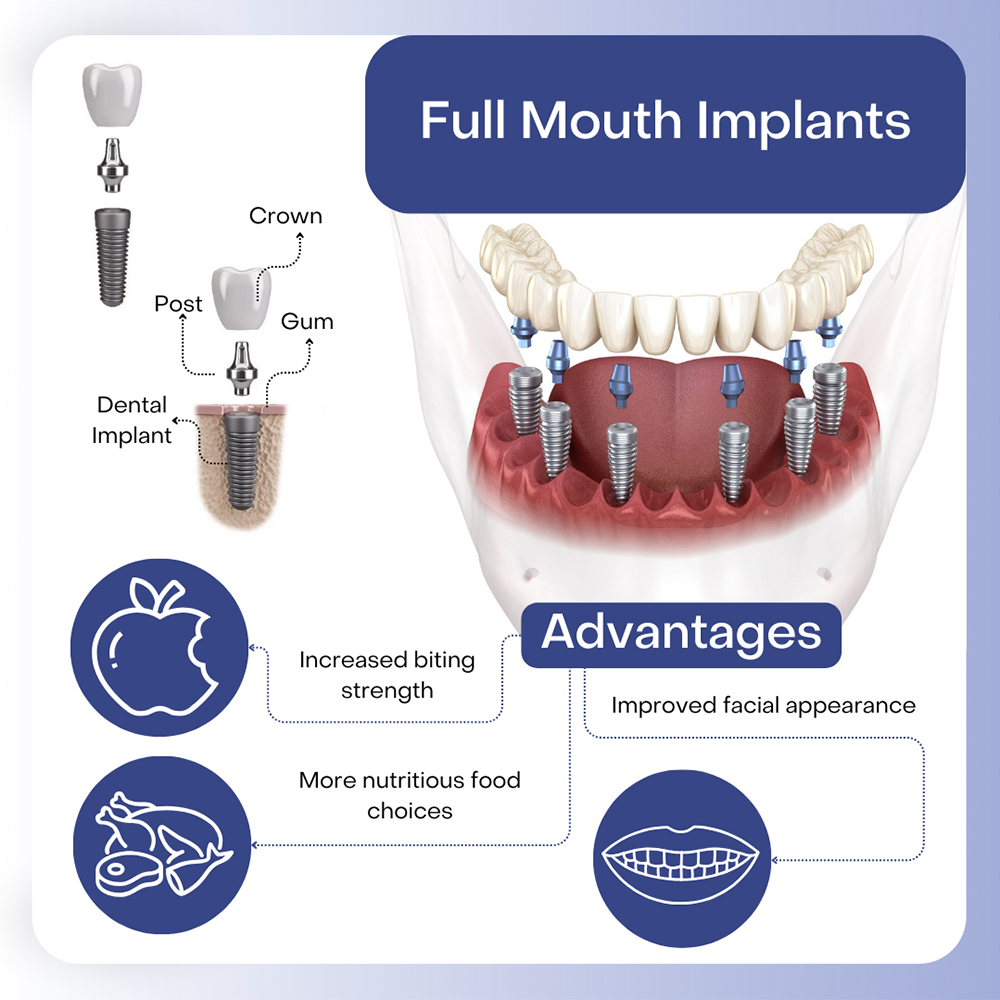The Of Dental Sense
The Of Dental Sense
Blog Article
Dental Sense Fundamentals Explained
Table of ContentsDental Sense - An OverviewThe smart Trick of Dental Sense That Nobody is DiscussingSome Known Details About Dental Sense The Dental Sense Diaries
are clinical tools operatively dental implanted into the jaw to bring back a person's capability to eat or their look. They offer assistance for artificial (phony) teeth, such as crowns, bridges, or dentures. When a tooth is shed as a result of injury or disease, an individual can experience issues such as fast bone loss, faulty speech, or adjustments to eating patterns that cause discomfort.Oral dental implant systems include an oral implant body and oral implant joint and might also include an abutment fixation screw. Professional teeth whitening. The dental implant body is operatively put in the jawbone instead of the tooth's root. The oral implant joint is normally affixed to the implant body by the joint addiction screw and prolongs with gums into the mouth to support the affixed artificial teeth
(https://gravatar.com/futuristiccreativelyc881a796d5)Structure of The Dental Implant System choosing oral implants, speak to your oral copyright about the prospective advantages and threats, and whether you are a candidate for the treatment. Points to take into consideration: Your general health and wellness is a crucial consider establishing whether you are a great candidate for oral implants, for how long it will certainly take to heal, and the length of time the dental implant may stay in place.
Smoking cigarettes may impact the healing process and lower the long-term success of the implant. The healing procedure for the dental implant body may take a number of months or longer, throughout which time you generally have a short-term abutment in place of the tooth. the dental implant treatment: Meticulously follow the oral hygiene directions offered to you by your oral supplier.
What Does Dental Sense Mean?
Implant failing can result in the demand for an additional operation to take care of or change the implant system. Restores the capacity to eat Restores cosmetic look Helps maintain the jawbone from diminishing because of bone loss Protects the health and wellness of the surrounding bone and periodontals Helps keep surrounding (neighboring) teeth secure Boosts lifestyle Damage to surrounding all-natural teeth throughout implant positioning Injury to the surrounding tissues during surgical treatment, such as sinus opening Injury during surgical treatment (as an example, crack of bordering jawbone) Poor feature, such as really feeling like the teeth do not bite with each other normally An experience that the tooth is loose or twisting in position arising from a joint screw loosening up Implant body failing (looseness of the implant body) due to systemic infection, which might be more most likely in patients with unrestrained diabetes mellitus as a result of neighborhood infection in bone and gums supporting the implant body because of delayed recovery, which might be most likely in clients who smoke Trouble cleaning up the gums around the dental implant, causing bad oral health Without treatment gum illness Post-surgical pins and needles due to nerve impingement or damage Constantly inform health and wellness care carriers and imaging service technicians that you have dental implants before any magnetic vibration imaging (MRI) or x-ray procedures.
FDA is not aware of any kind of damaging occasions reported for MRI or x-ray treatments with dental implants. Dental implants systems are commonly made from materials that follow worldwide agreement standards of the International Company for Standardization (ISO) or ASTM International. These criteria have information of what makes a safe product.

An oral implant is a framework that replaces a missing out on tooth. With screw-like devices, the surgeon inserts an implant right into the jawbone, and it acts as an anchor for a fabricated tooth, called a crown. A tool called a joint connects the synthetic tooth to the dental implant. The crown is custom-made to fit the person's mouth and match the shade of their teeth.
Dental Sense Can Be Fun For Everyone
Some individuals Going Here are not eligible for oral implant surgery. It is for dental surgeons to operate people with: severe illnessuncontrollable metabolic diseasebone or soft cells condition or infectionIf these problems are resolved, a person can have the surgery. In, dental specialists avoid operating people with: If people with any one of the above undertake oral implant surgery, there is a greater threat of the dental implant stopping working.

Oral implant surgery is an individualized process. Offer you time to recover. Affix the post and final crown, bridge or denture.
Next, your doctor will very carefully position the oral implant right into your jaw. Ultimately, your specialist will rearrange your gums and close the cut with stitches. If your dental implant is near the front of your mouth, your dentist will make a momentary tooth for you to put on up until you heal. By doing this, you will not have a void in your smile while you recuperate.
The Ultimate Guide To Dental Sense
Your supplier can inform you what to anticipate in your circumstance. Throughout the healing stage, your jawbone must fuse to the oral implant. This procedure, called osseointegration, is important for stability and lasting success. This process can take anywhere from three to 9 months. In many cases, it might take much longer.
Once your implant heals, your dental practitioner can connect the abutment (little port post) and your final restoration (crown, bridge or denture). This usually takes about one hour to complete and might require a second minor surgical treatment. You should not really feel any kind of discomfort during your oral implant procedure since your company will certainly utilize medication to numb your gum tissues.
Report this page